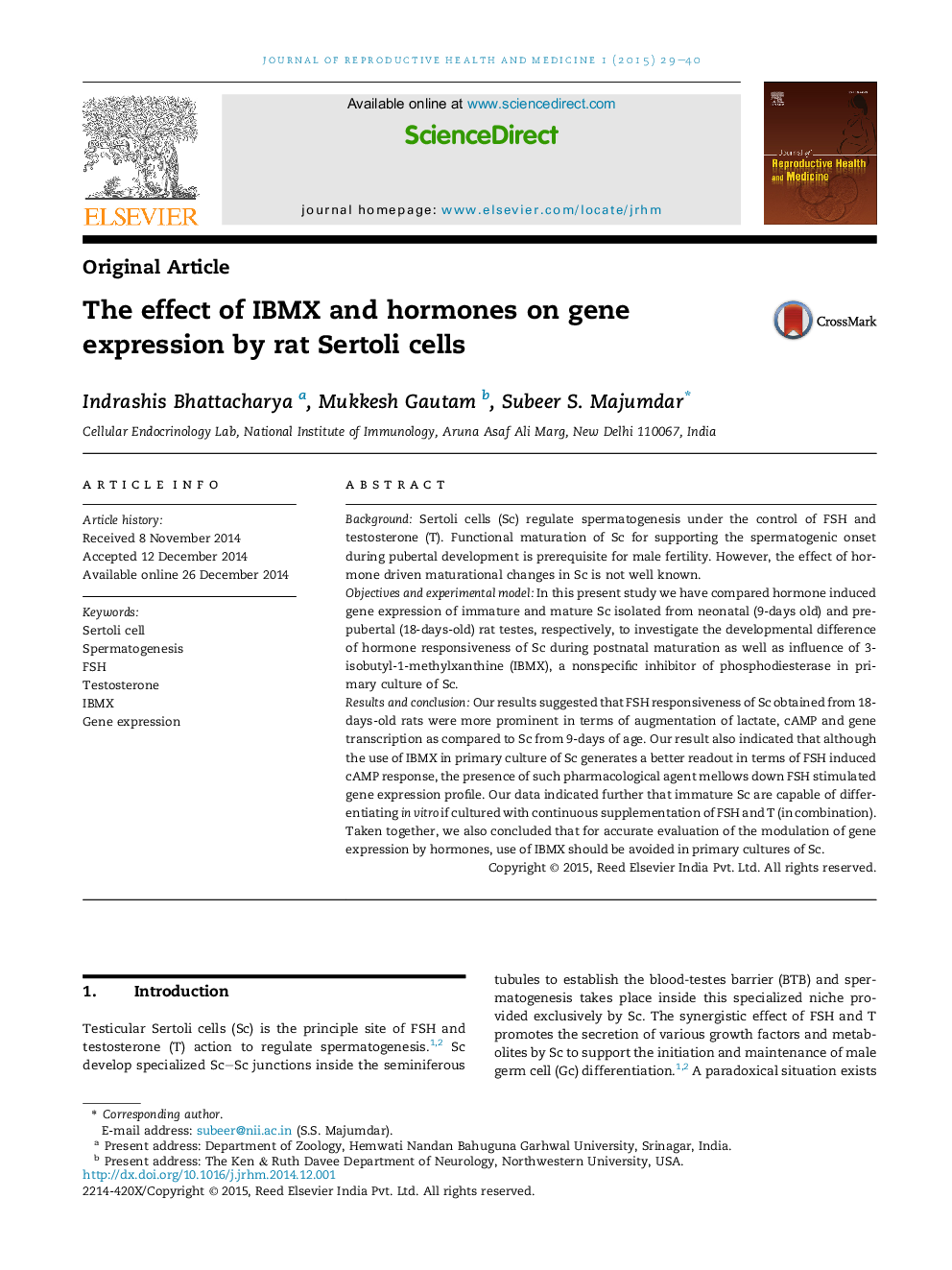| Article ID | Journal | Published Year | Pages | File Type |
|---|---|---|---|---|
| 3252012 | Journal of Reproductive Health and Medicine | 2015 | 12 Pages |
BackgroundSertoli cells (Sc) regulate spermatogenesis under the control of FSH and testosterone (T). Functional maturation of Sc for supporting the spermatogenic onset during pubertal development is prerequisite for male fertility. However, the effect of hormone driven maturational changes in Sc is not well known.Objectives and experimental modelIn this present study we have compared hormone induced gene expression of immature and mature Sc isolated from neonatal (9-days old) and prepubertal (18-days-old) rat testes, respectively, to investigate the developmental difference of hormone responsiveness of Sc during postnatal maturation as well as influence of 3-isobutyl-1-methylxanthine (IBMX), a nonspecific inhibitor of phosphodiesterase in primary culture of Sc.Results and conclusionOur results suggested that FSH responsiveness of Sc obtained from 18-days-old rats were more prominent in terms of augmentation of lactate, cAMP and gene transcription as compared to Sc from 9-days of age. Our result also indicated that although the use of IBMX in primary culture of Sc generates a better readout in terms of FSH induced cAMP response, the presence of such pharmacological agent mellows down FSH stimulated gene expression profile. Our data indicated further that immature Sc are capable of differentiating in vitro if cultured with continuous supplementation of FSH and T (in combination). Taken together, we also concluded that for accurate evaluation of the modulation of gene expression by hormones, use of IBMX should be avoided in primary cultures of Sc.
